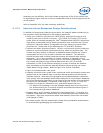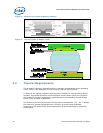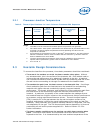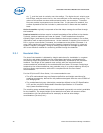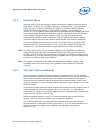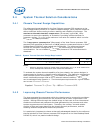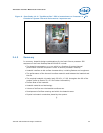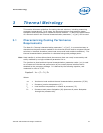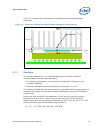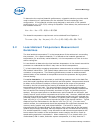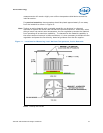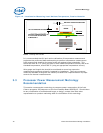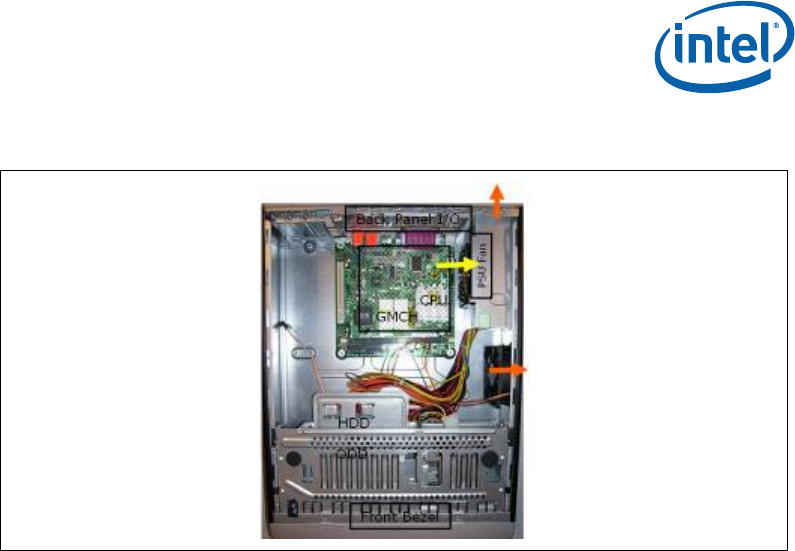
Processor Thermal/Mechanical Information
Thermal and Mechanical Design Guidelines 25
Figure 9. Case Study #4: A “Top Mount Fan” PSU is located next to Processor in μATX
Chassis for System Thermal Performance Improvement
2.4.3 Summary
In summary, heatsink design considerations for the Intel Celeron processor 200
sequence on the Intel Desktop Board D201GLY2 include:
• The heatsink temperature
TS-TOP-MAX
which is a function of system thermal
performance must be compliant in order to ensure processor reliability.
• Heatsink interface to die surface characteristics, including flatness and roughness.
• The performance of the thermal interface material used between the heatsink and
the die.
• The required heatsink clip static load, 9.9 lbf ± 1.2 lbf, throughout the life of the
product (refer to Section
2.1.2.2 for further information).
• Surface area of the heatsink.
• Heatsink material and technology.
• Volume of airflow over the heatsink surface area.
• Development of airflow entering and within the heatsink area.
• Physical volumetric constraints placed by the system.
§



